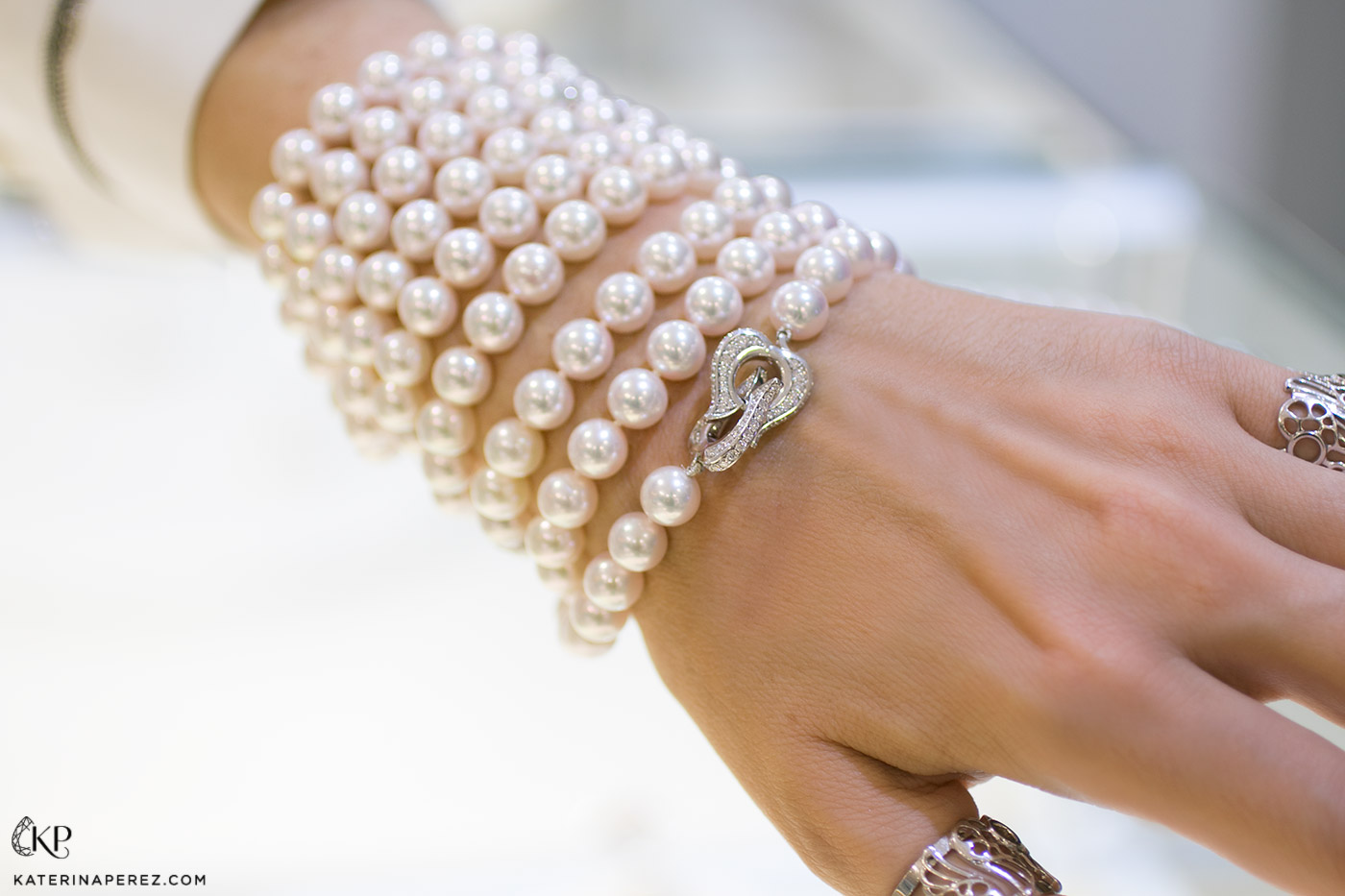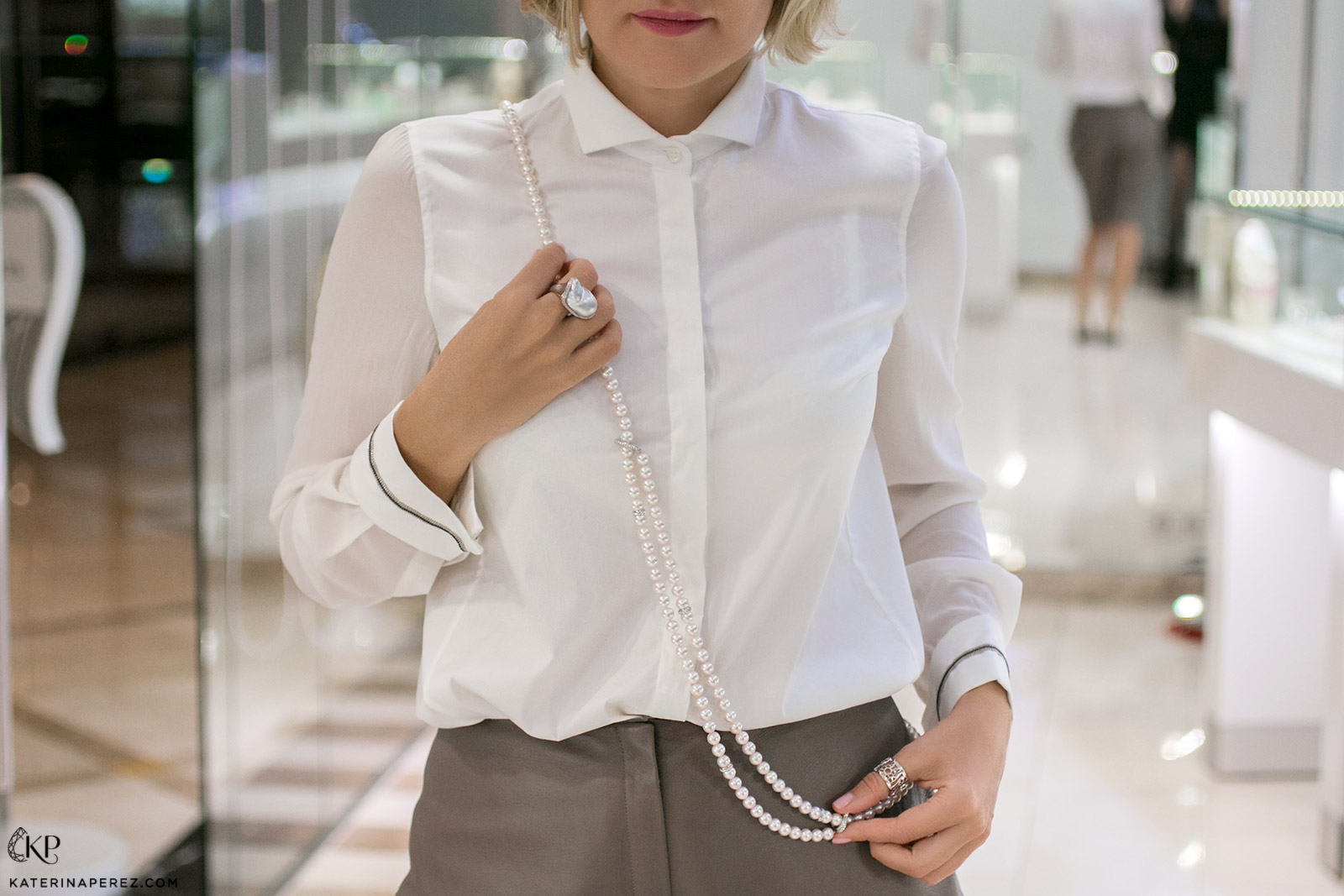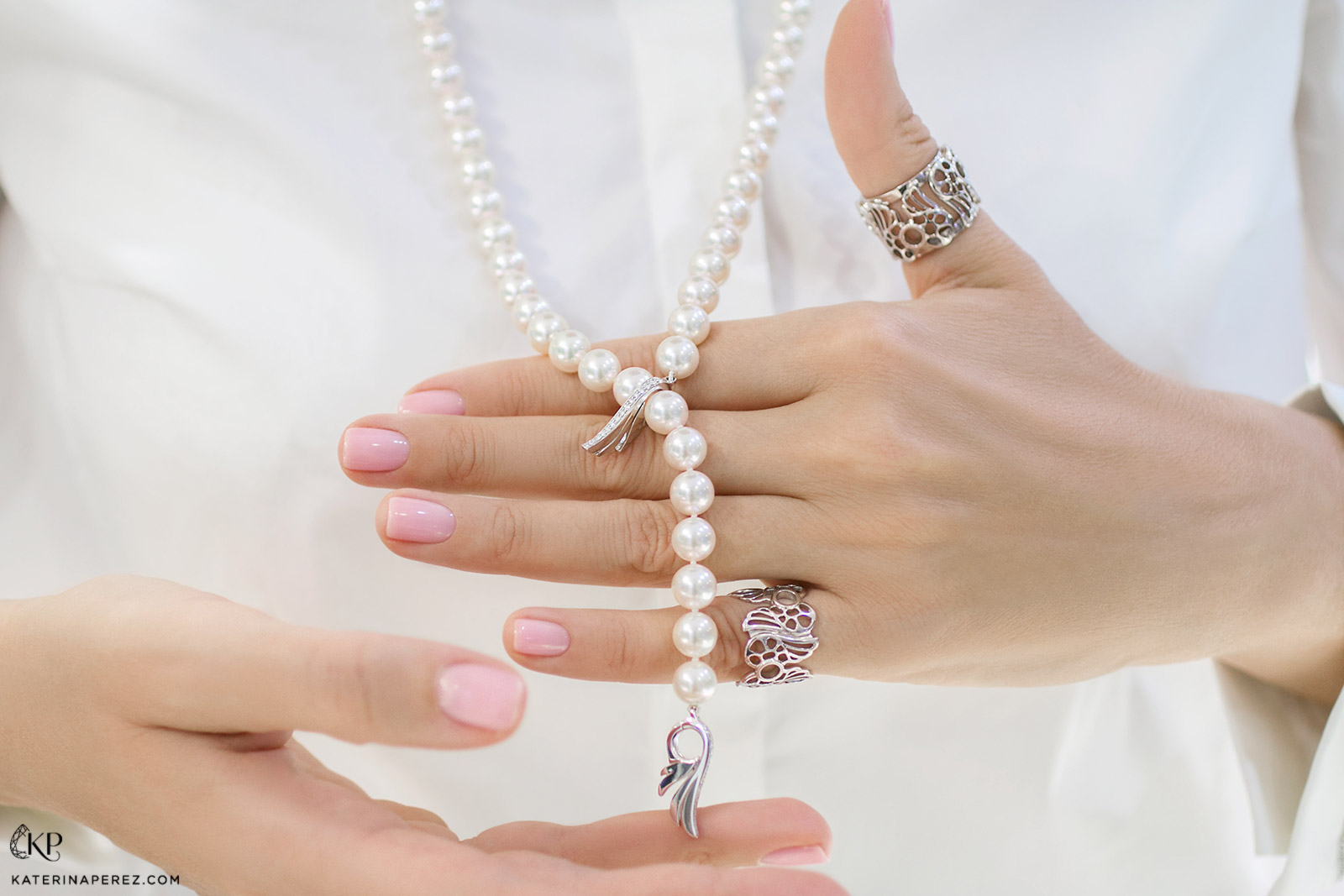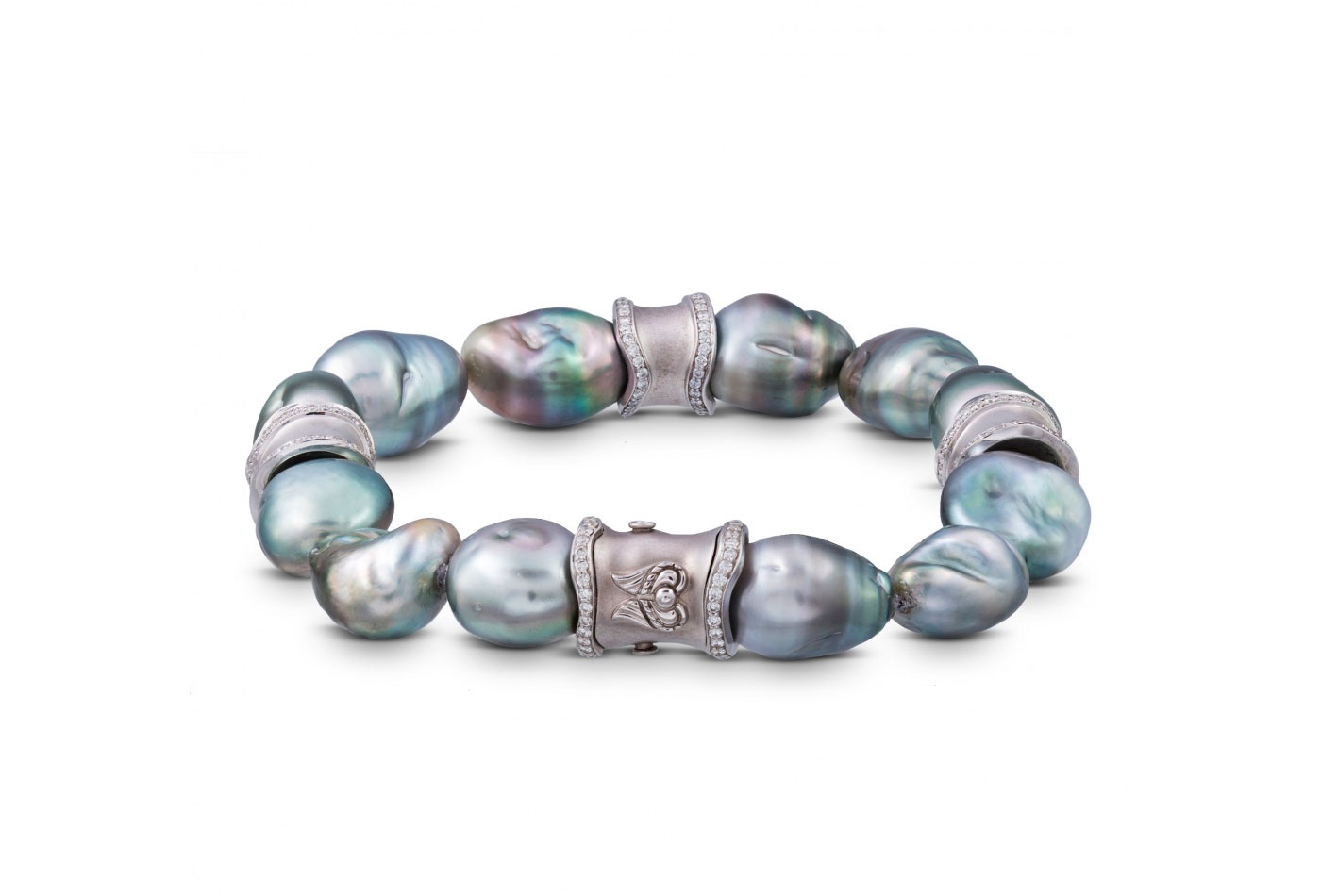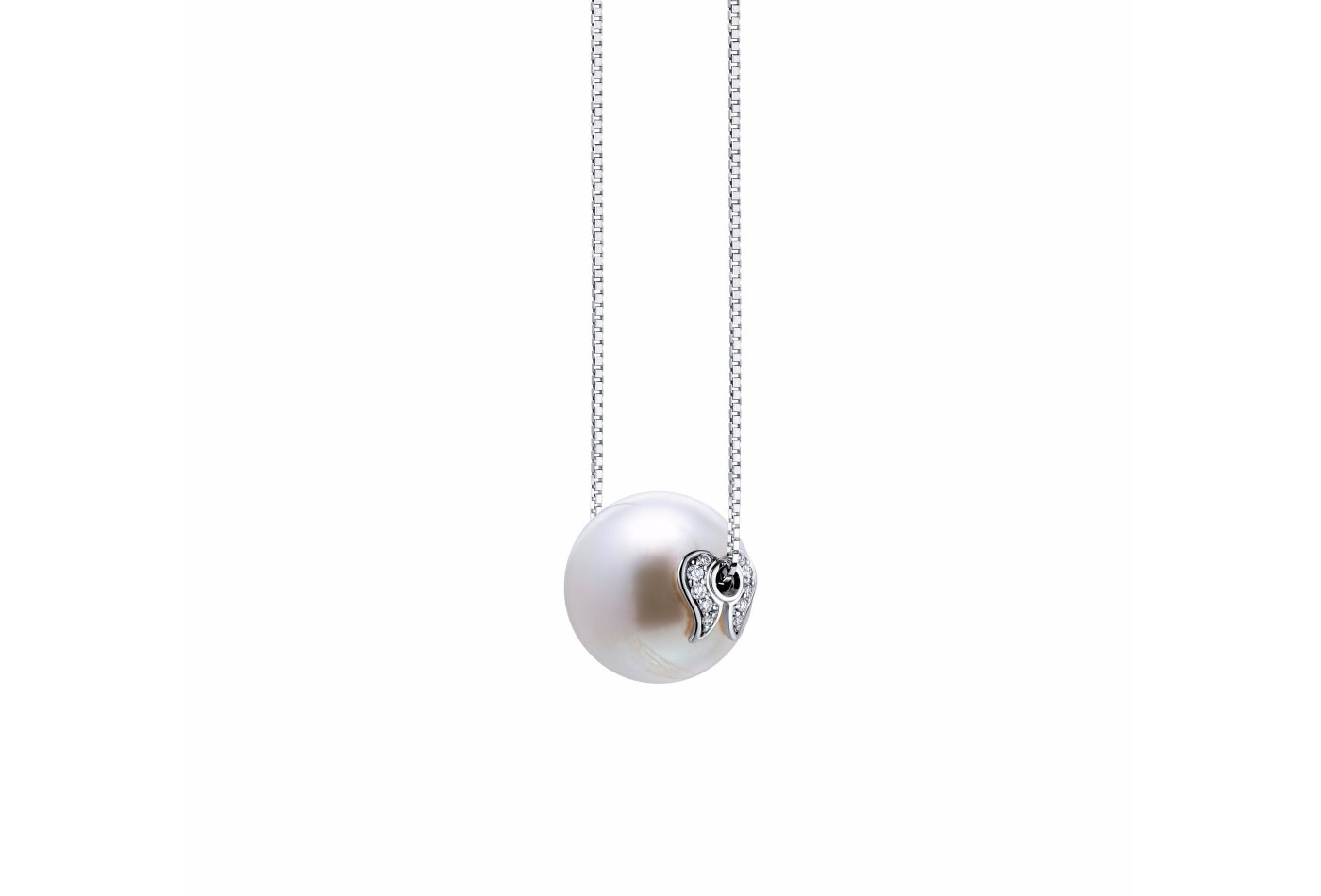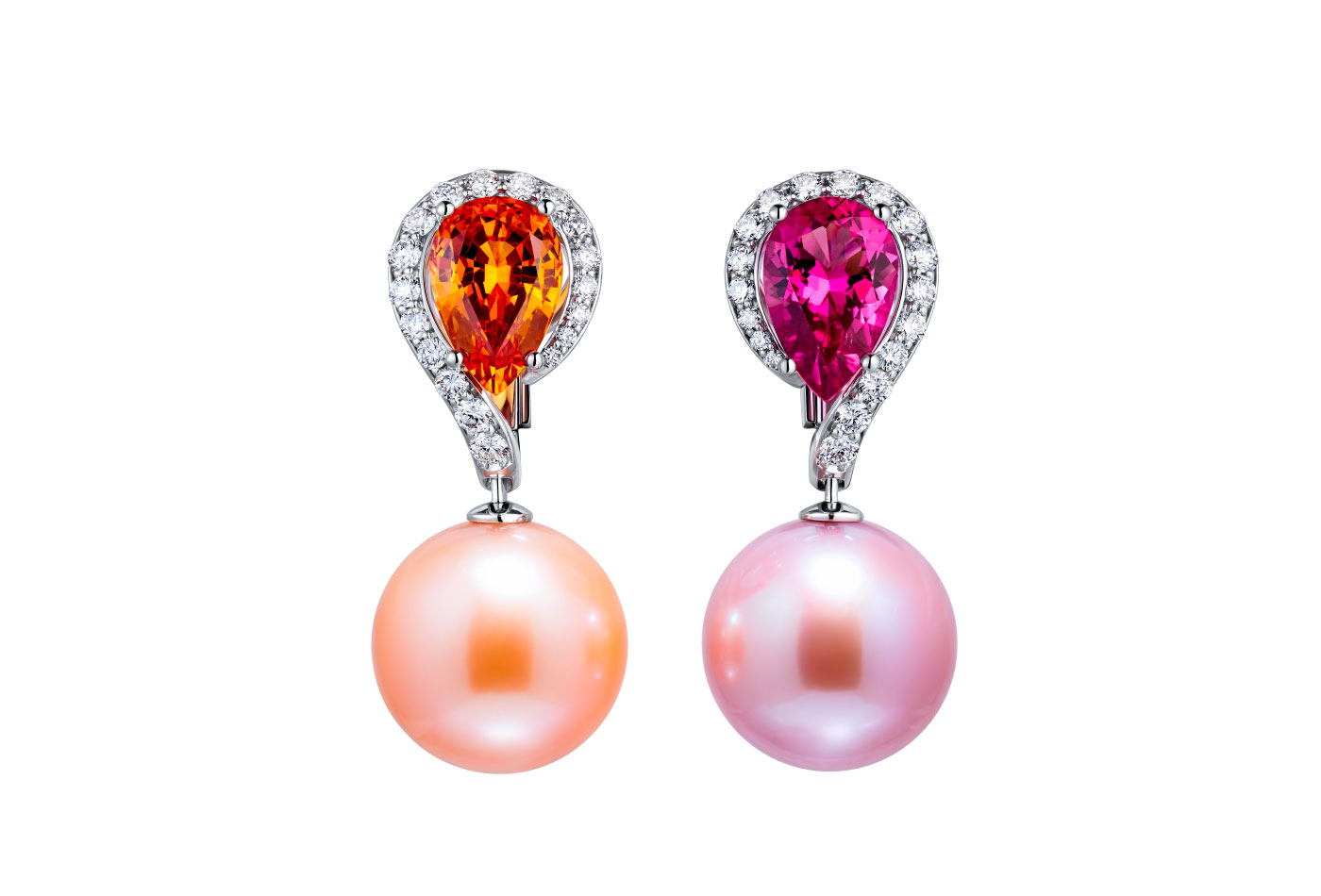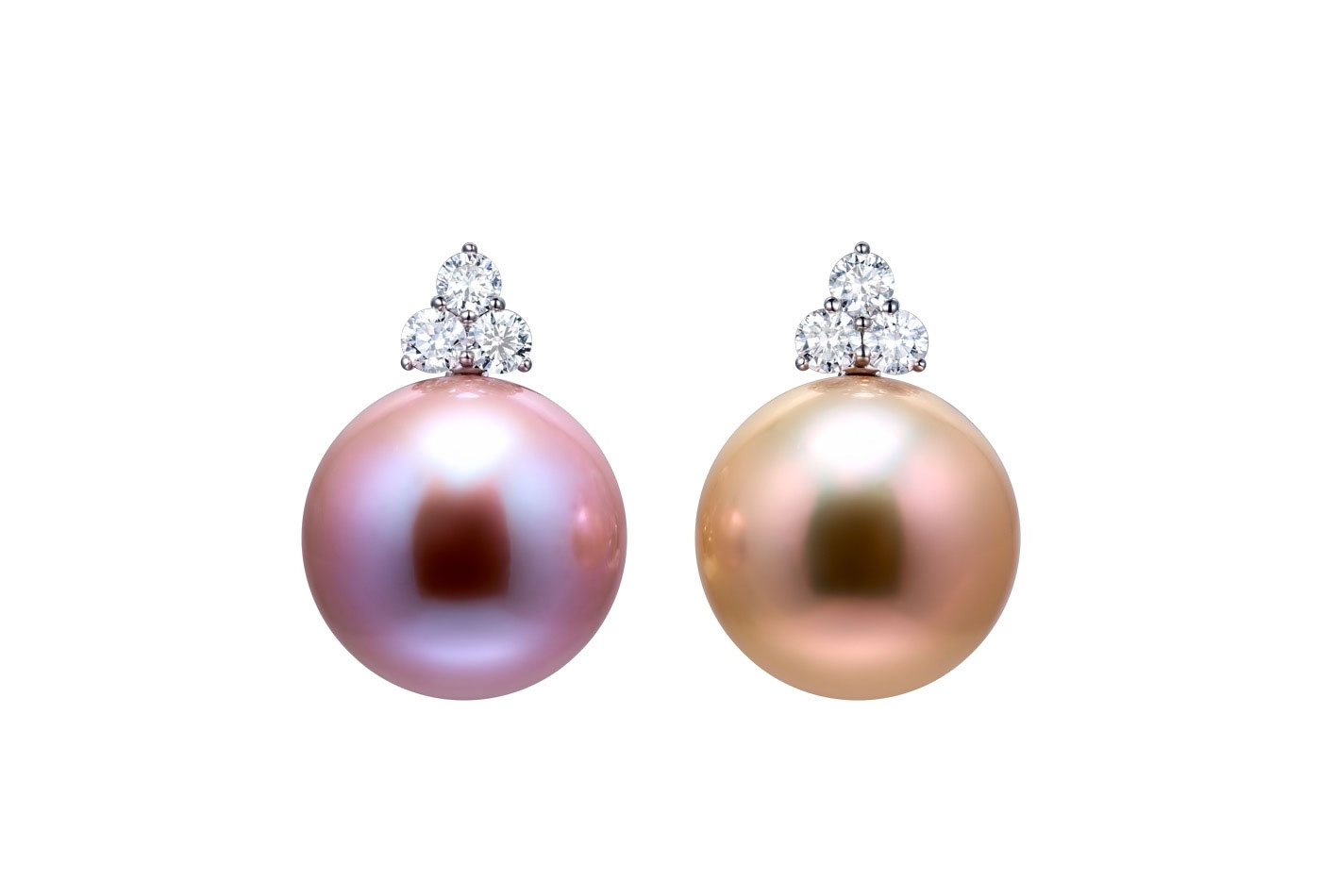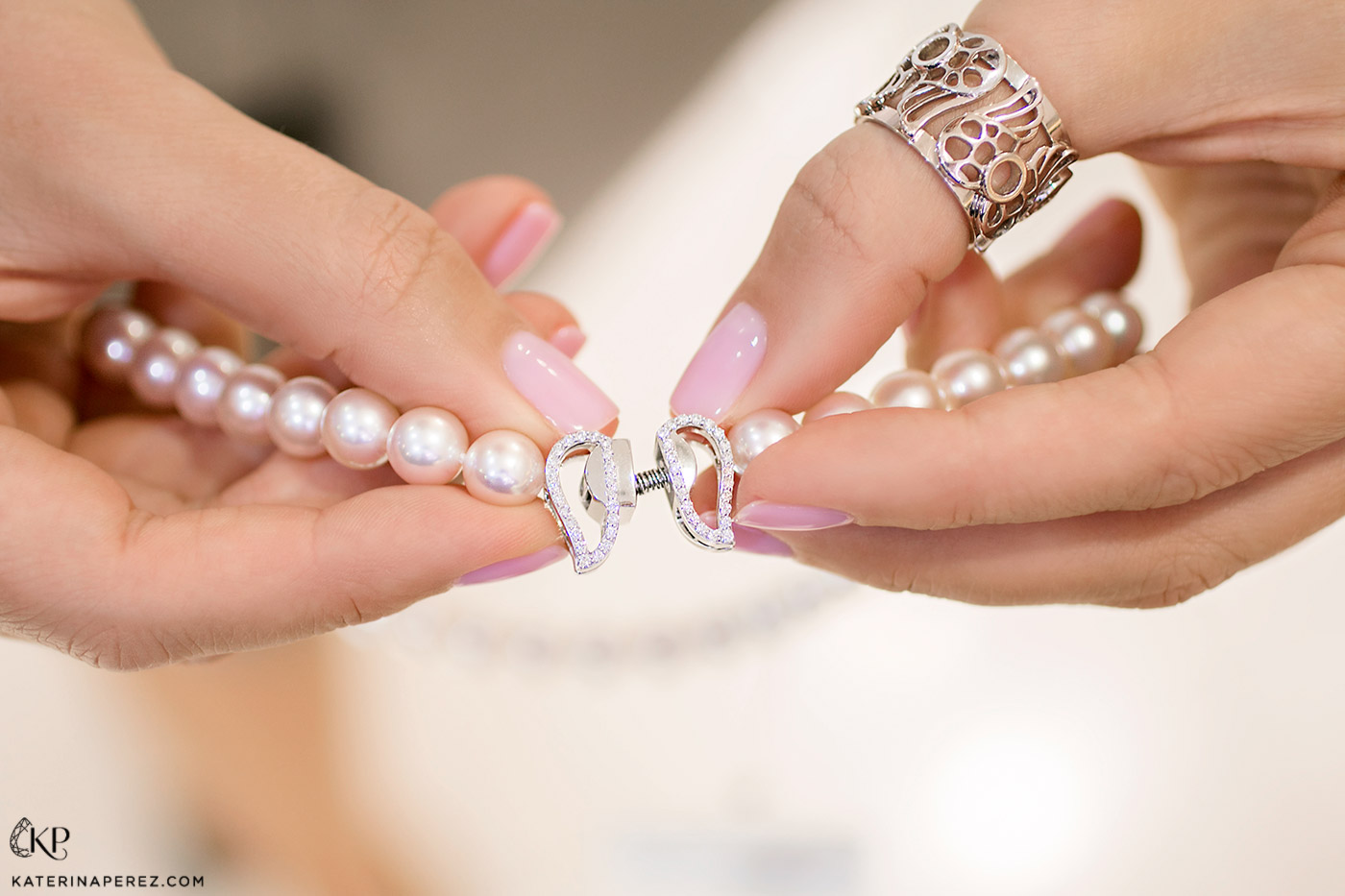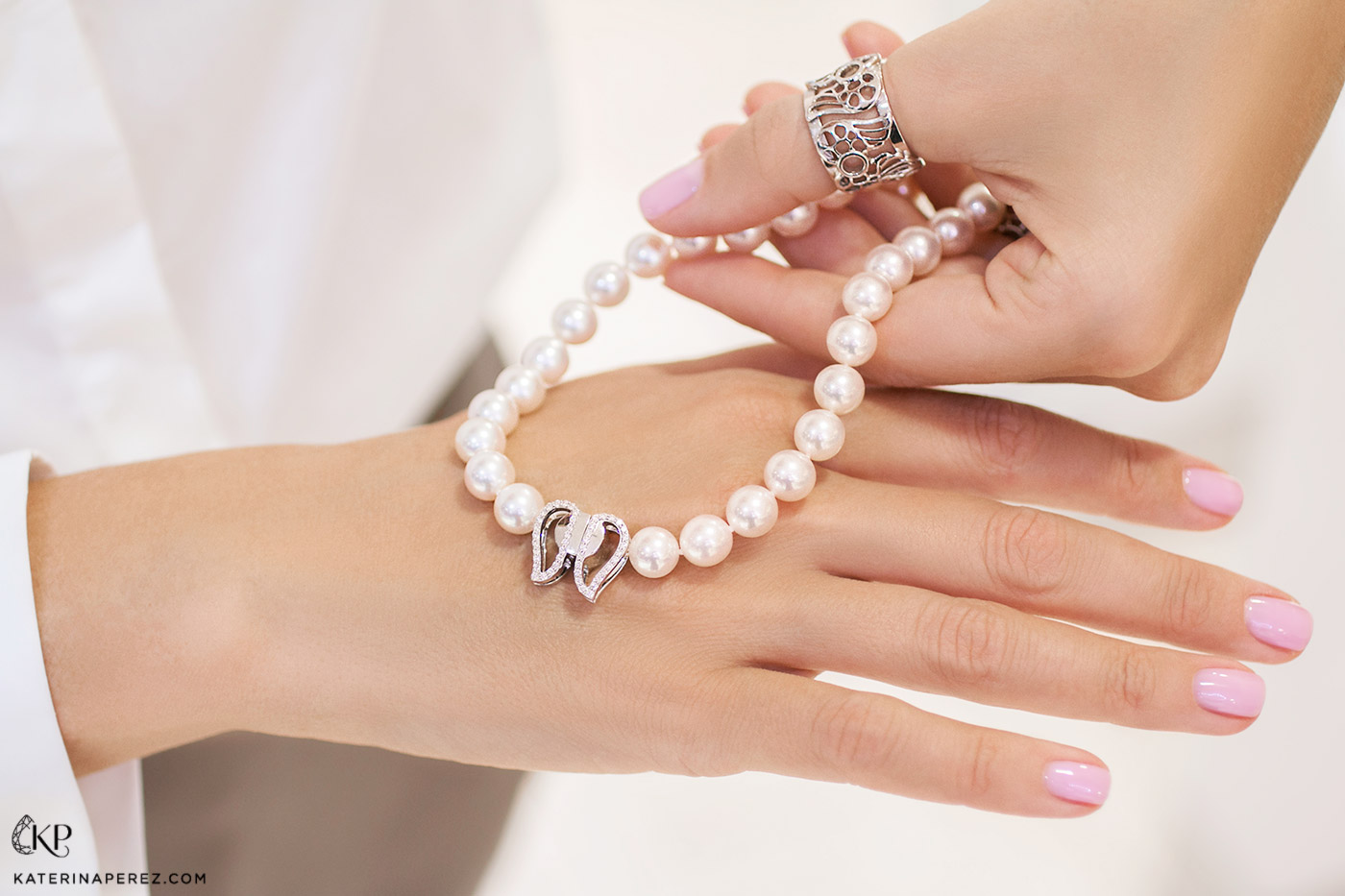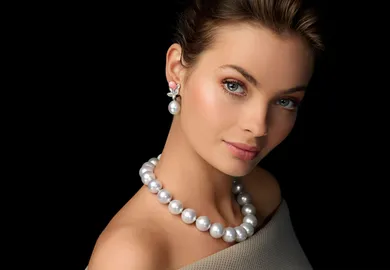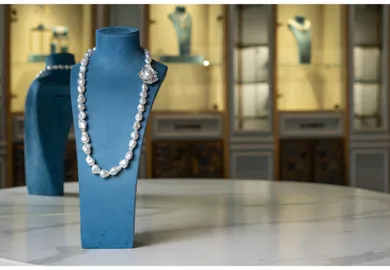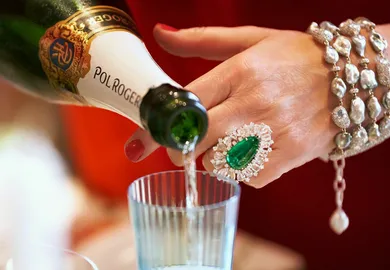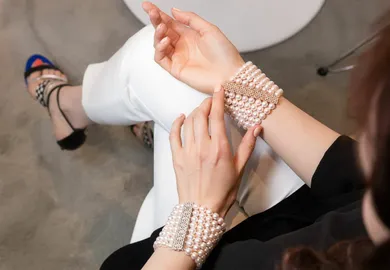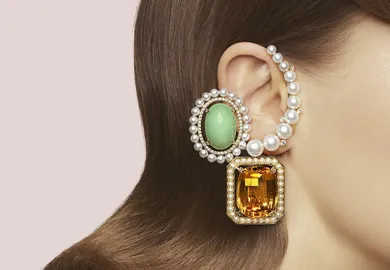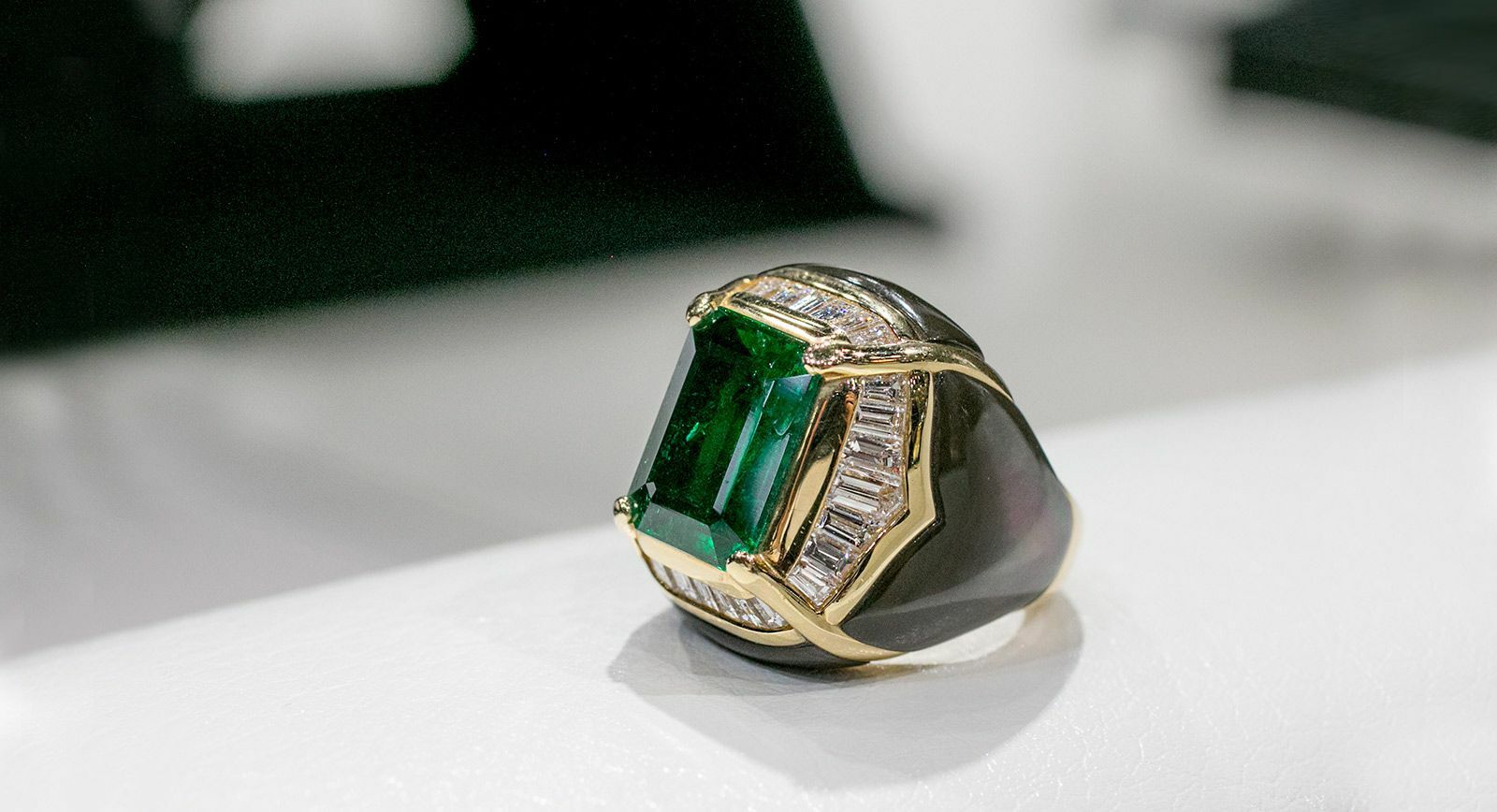
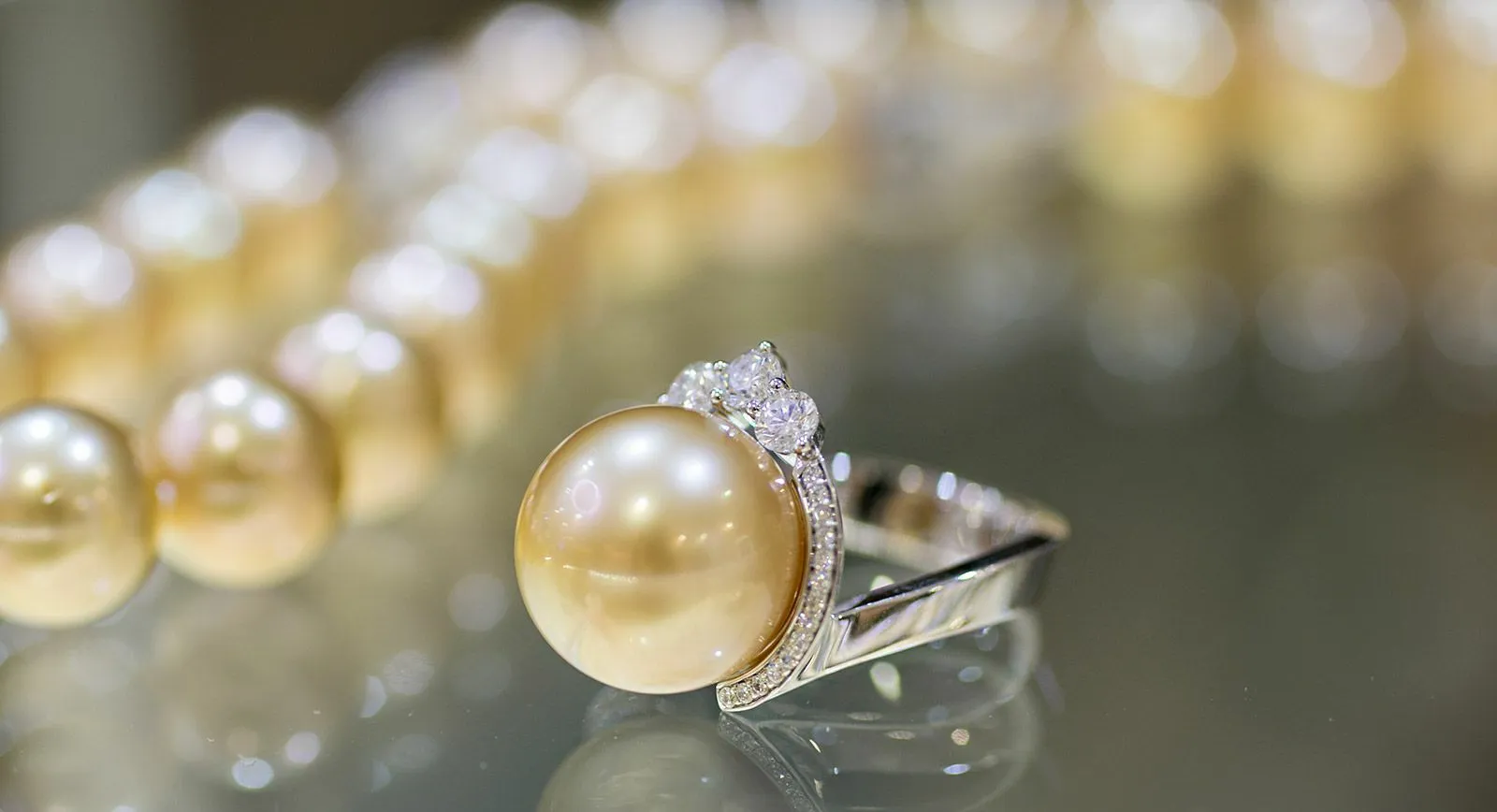
Ksenia Podnebesnaya: Expert Advice on Buying Pearl Jewellery
The perception of pearls is a long way from simply pretty white beads, but it is only possible to comprehend the reasons for this by understanding the nuances of their beauty, rarity and preciousness. There are essentially two main types of pearl: saltwater (i.e., marine) and freshwater varieties, of which – depending on the source locations – shapes and colours are split into different sub-groups. After studying the entire pearl spectrum, you can begin to appreciate their decorative potential and diversity in the same way as pearl specialist Ksenia Podnebesnaya. In this article, she shares her exclusive advice on buying pearls.
Founder of the eponymous Moscow-based jewellery maison, Ksenia lived in Japan where she fell in love with this organic mineral. She predominantly works with saltwater pearls, but if she cannot find the shade she needs then she delves into the world of their freshwater counterparts. Through her many years of experience working with this stunning gift of nature and with clients, she is able to recognise pearl lovers before they even know it themselves – but after taking Ksenia’s advice and trying on a jewel with the ‘right’ pearl, they start to recognise their love for pearls too.
Over the years, as I have sold pearls in Russia, I have noticed a preference for rather cool coloured Akoya pearls, but in Japan they value the pale pink variety above all others – this is the one that best suits any skin tone. – Ksenia Podnebesnaya
She also remarks that, according to Japanese tradition, the diameter of a pearl is very precisely associated with the age of a woman: the younger she is, the smaller the pearl she wears. Russian women do not observe this custom – her clients love to experiment with baby Akoya pearls by, for example, combining a single sautoir measuring 110-115 cm in length and comprising pearls of various diameters, with s string of Akoya pearls are 9-9.5mm and 4-4.5mm.
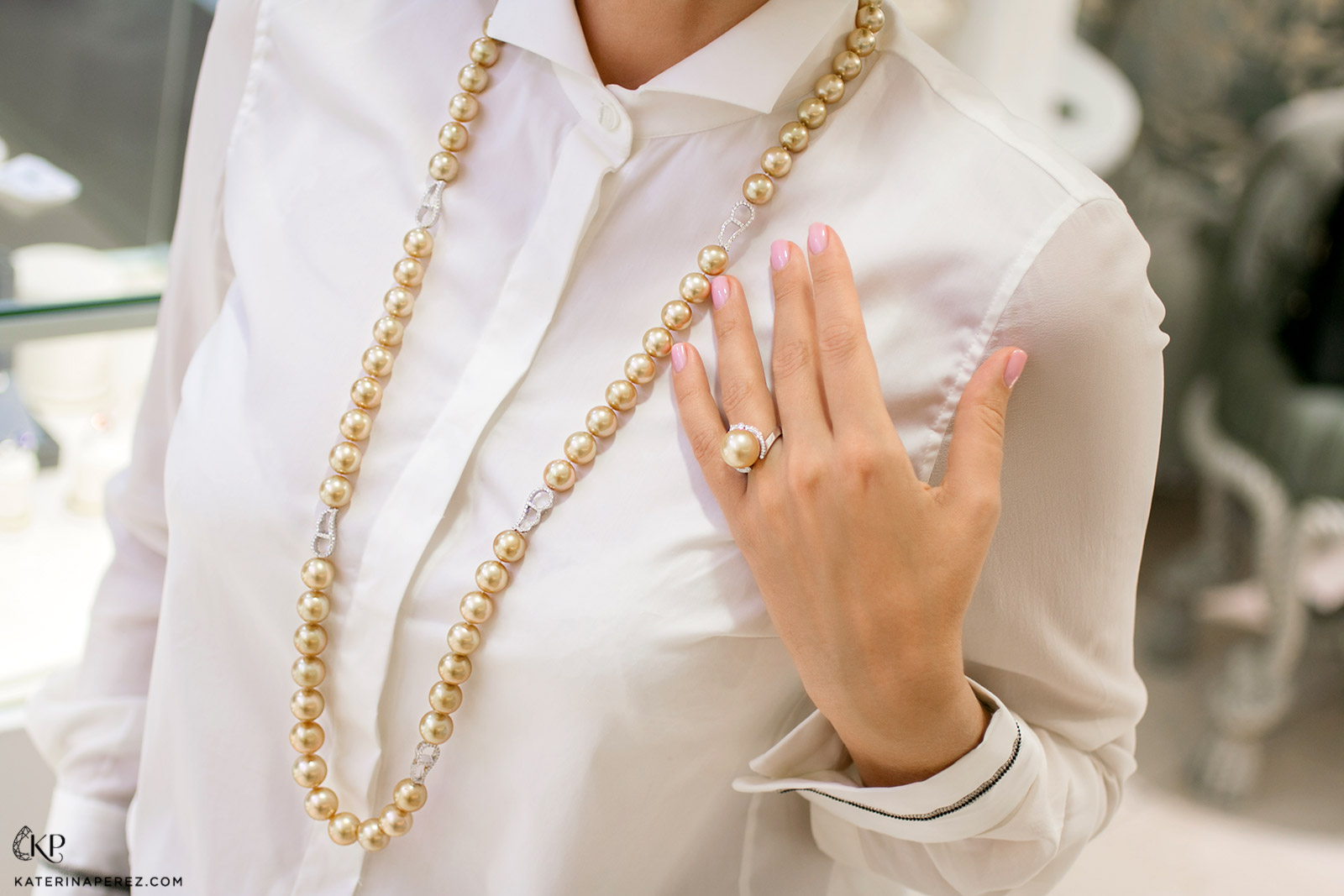
Ksenia Podnebesnaya sautoir necklace and ring with South Sea pearls and diamonds
As I looked at Ksenia Podnebesnaya’s collections, I was initially struck by the way in which the entirety of the saltwater pearls are completely visible; for example, the pearls in the earrings hang in such a way that you can view the precious sphere from all sides. This is no accident: in Ksenia’s words, it is not acceptable for any part of a perfect pearl to be concealed. Jewellers are able to conceal surface flaws – so the more decorative components there are around a pearl – the more likely it is that behind a rich, magnificent design there lies a pearl with distinctly mediocre characteristics.
The clarity of a pearl’s surface (or, as industry professionals say, the purity of its face) is primarily what influences its value. For instance, a pearl with one insignificant blemish or ‘kizu’ – meaning ‘bruise’ in Japanese – would be worth considerably more if you could bore a hole into it, and leave nothing visible to the naked eye other than a totally flawless pearl. – Ksenia Podnebesnaya
However, a smooth and even surface is not the only thing that you need to examine when buying a pearl; the diameter, the colour and the degree of lustre are all important elements for consideration which can also affect the price.
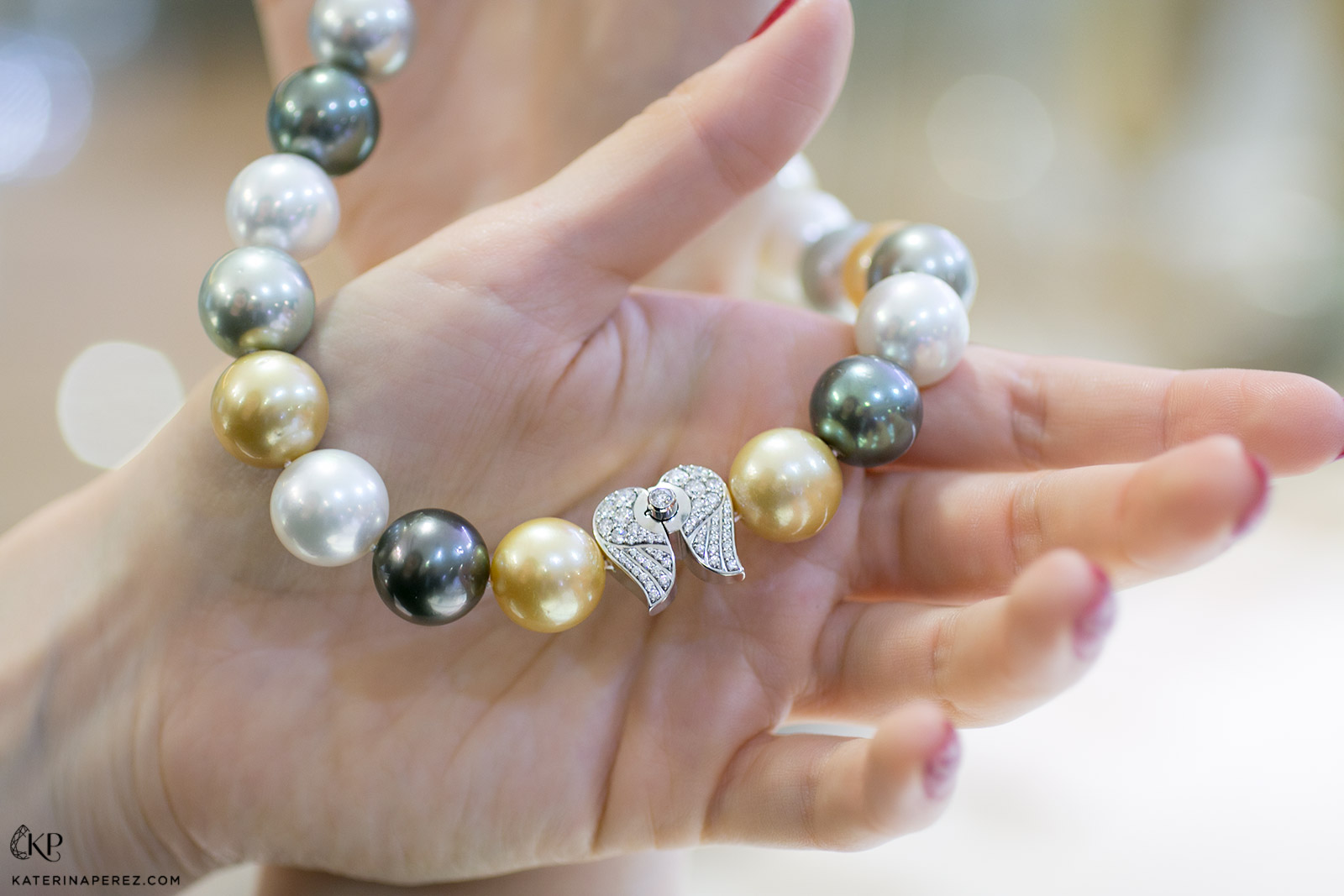
Ksenia Podnebesnaya necklace with South Sea and Tahitian pearls and diamond clasp
We have adopted the Japanese perception of pearls, and the Japanese system of valuing them which – in my view, – is the most true and accurate. As far as this system is concerned, what is paramount is the quality of the sheen – what you are looking for is a mirror-like reflection that appears on the surface of a pearl when various objects are put next to it. – Ksenia Podnebesnaya
To determine the degree of a pearl’s lustre, all you have to do is move one of your fingers close to the pearl: the more distinct and mirror-like the reflection, the better. Incidentally, sometimes a high level of lustre can compensate for minor shape disparities and small ‘bruises’.
For those who want to buy a piece that includes pearl, Ksenia recommends that they look at the object of their desire carefully, compare it with different types of pearl, learn how to appreciate it on its own terms and, of course, work out from what its value arises. This means having to take a whole range of factors into account: the size, the shape, the thickness of the nacre layer, the sheen, the surface clarity, and – if there is more than one pearl within the design – how closely their colours are matched.
What’s more, it is important to understand that each type of pearl has its own range of sizes, its own colours that are expensive, valuable and rare. For gold South Sea pearls, this colour is burning gold, but for Tahitian it is peacock, for example. – Ksenia Podnebesnaya
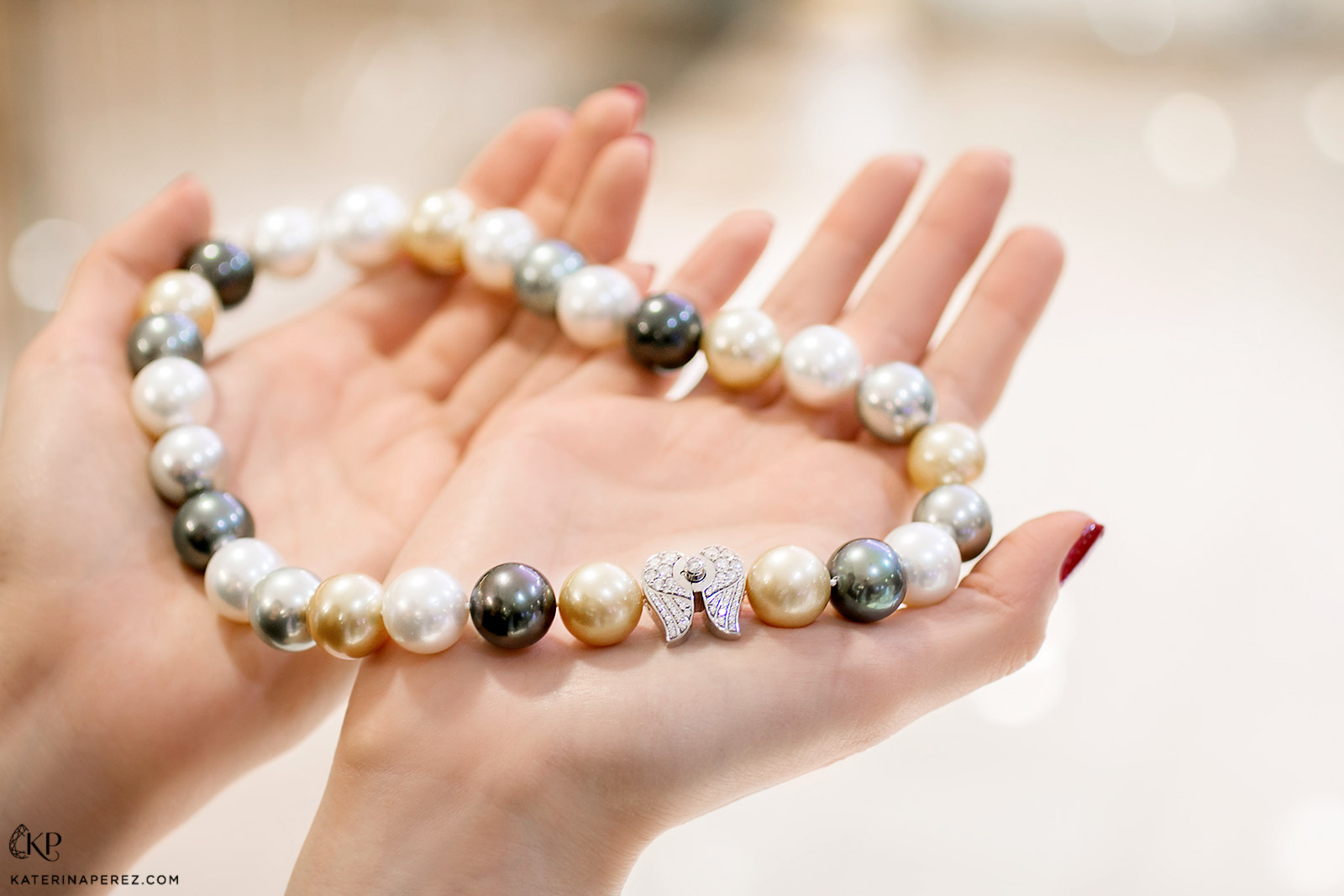
Ksenia Podnebesnaya necklace with South Sea and Tahitian pearls and diamond clasp
When a pearl is chosen correctly to suit the owner – to match her skin, eye colour, face shape and appearance as a whole – she does not even have to think about how to incorporate it into a specific look. A pearl can simply be a natural continuation of herself, her most universal piece of jewellery.
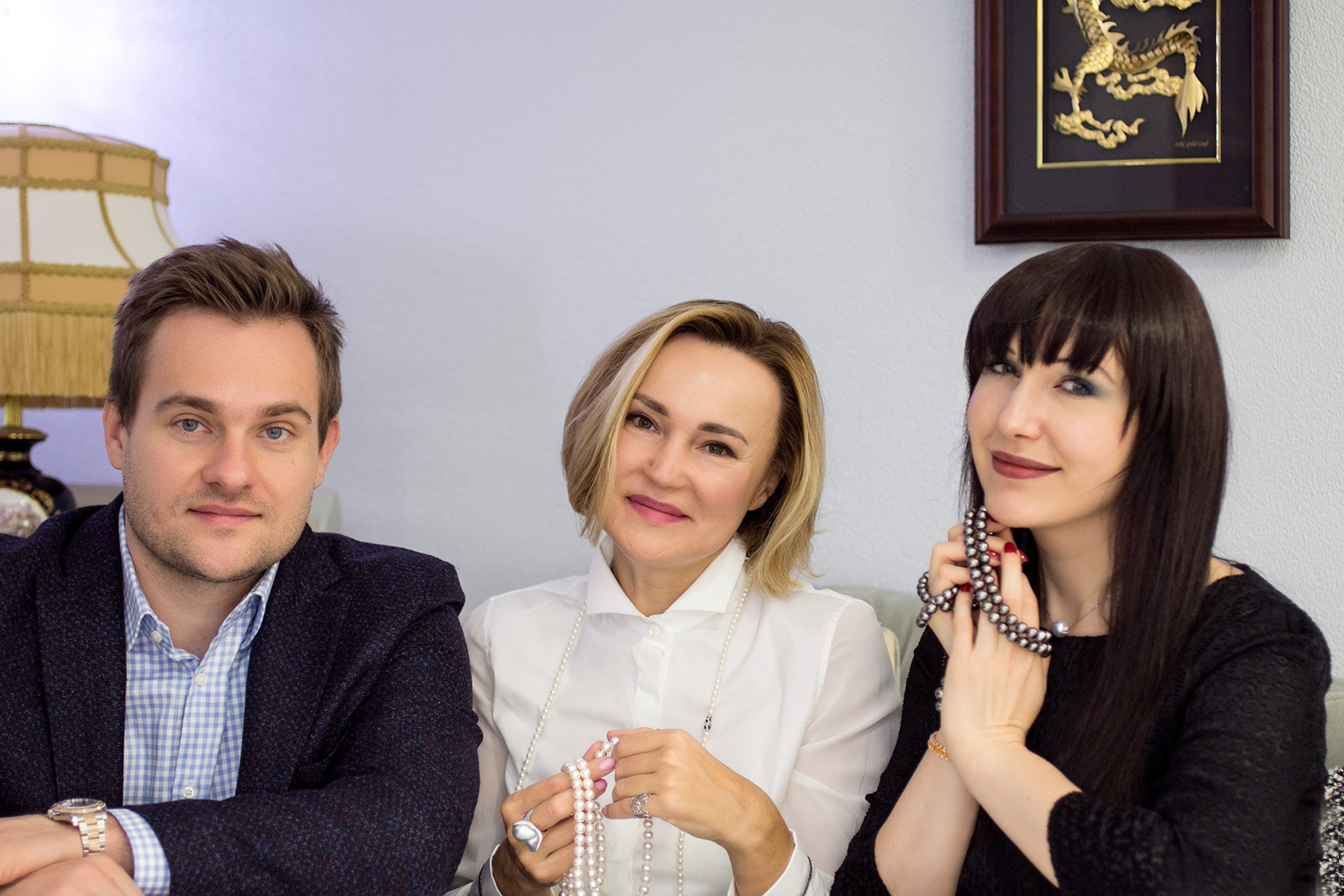
The founders of Podnebesnaya and Podnebesny, Ilya Podnebesny and Ksenia Podnebesnaya with Katerina Perez
I encourage everyone to be as daring as possible when it comes to pearls, to combine different varieties in a single look. The more freedom you allow yourself, the more authentic and interesting your look will be. – Ksenia Podnebesnaya
How could anyone disagree?

WORDS
Katerina Perez is a jewellery insider, journalist and brand consultant with more than 15 years’ experience in the jewellery sector. Paris-based, Katerina has worked as a freelance journalist and content editor since 2011, writing articles for international publications. To share her jewellery knowledge and expertise, Katerina founded this website and launched her @katerina_perez Instagram in 2013.
